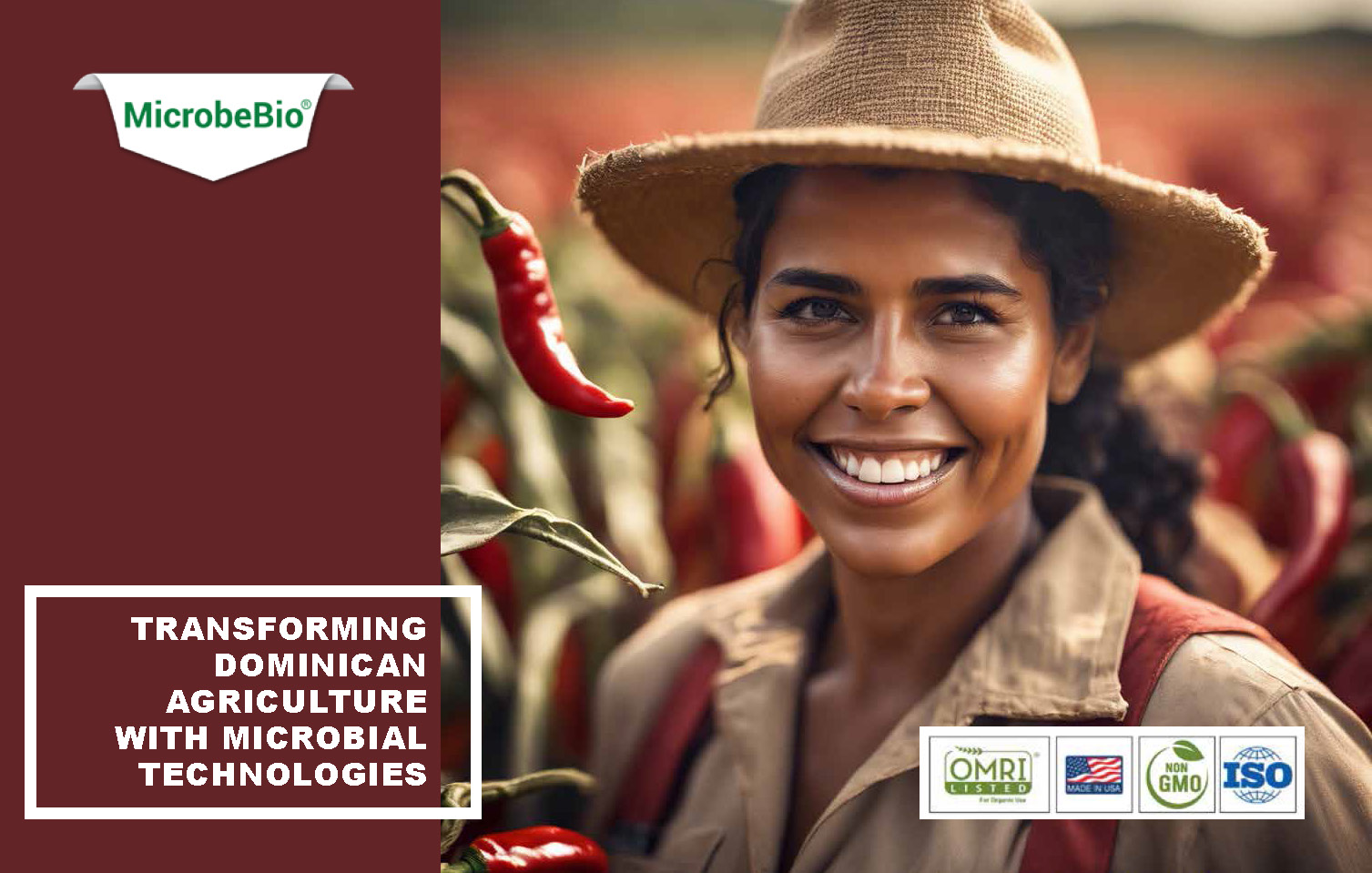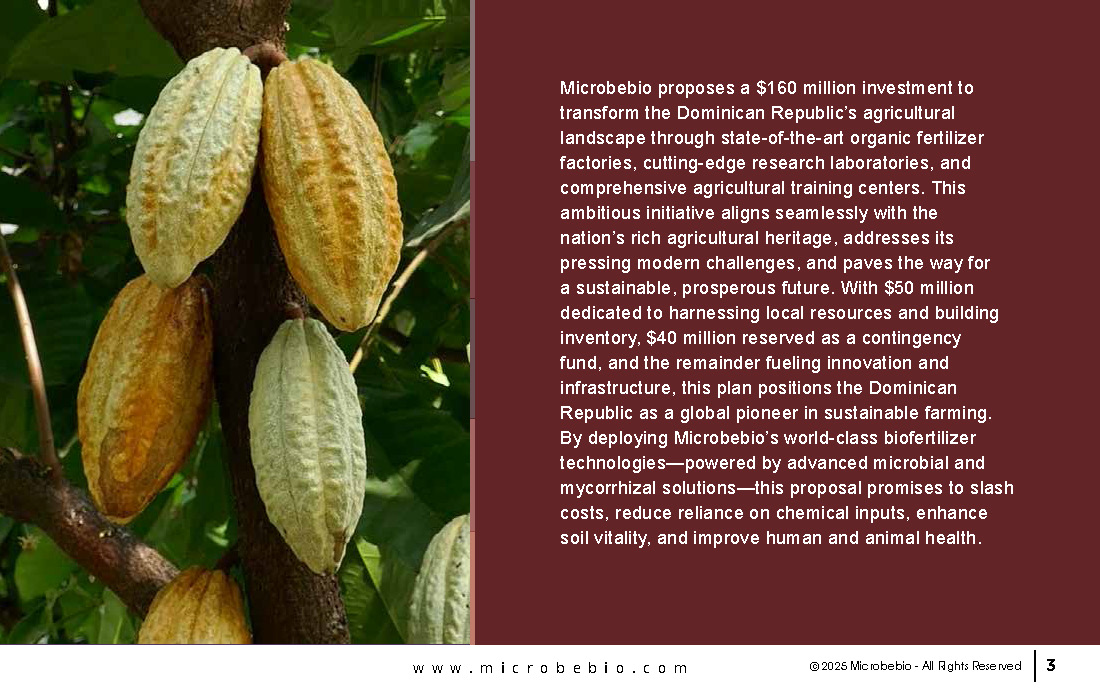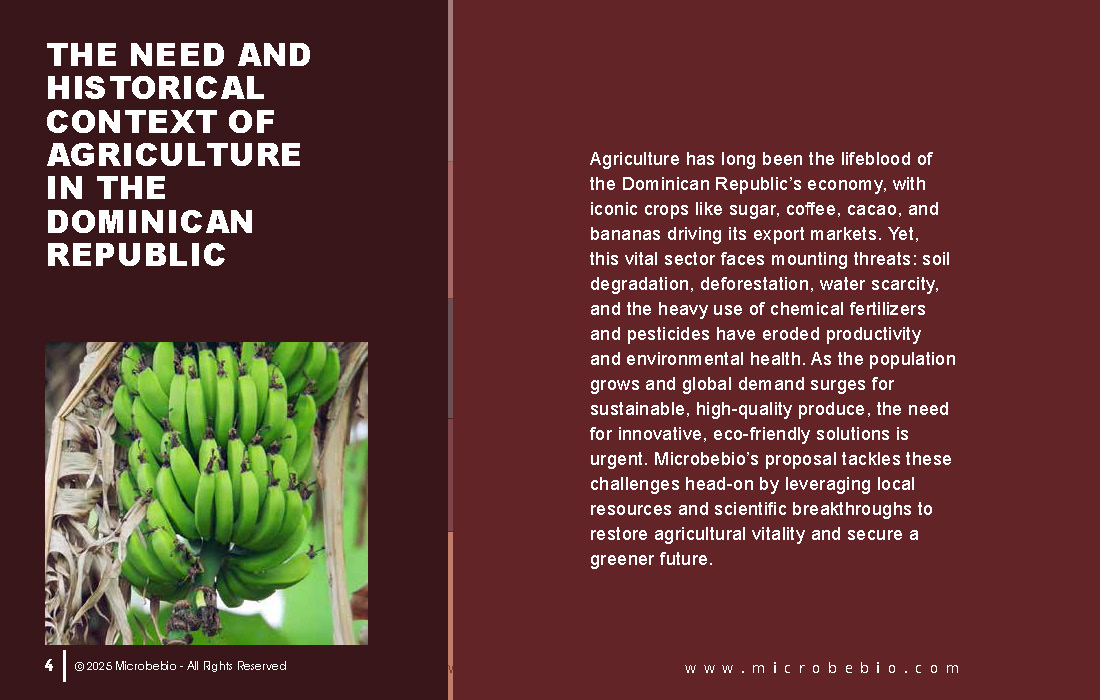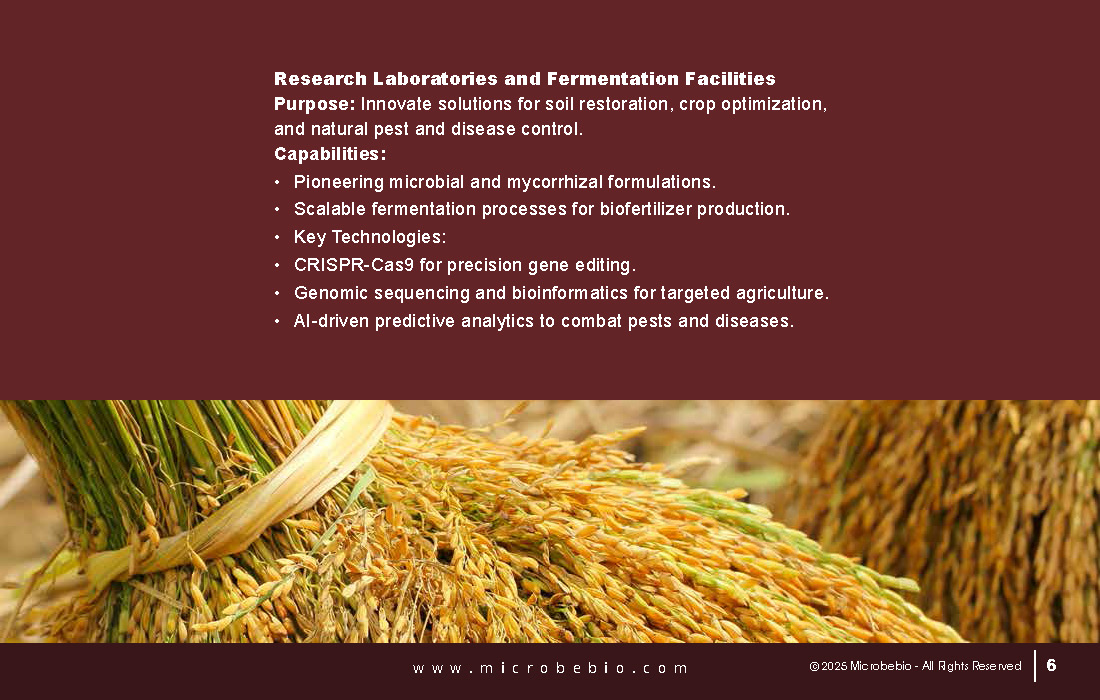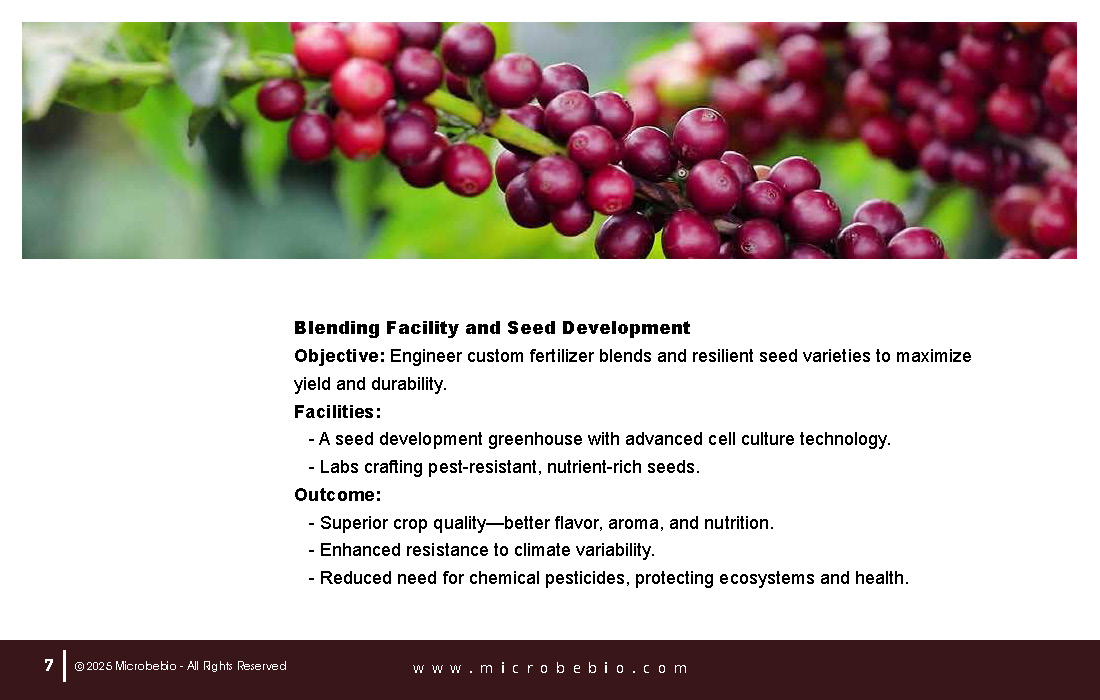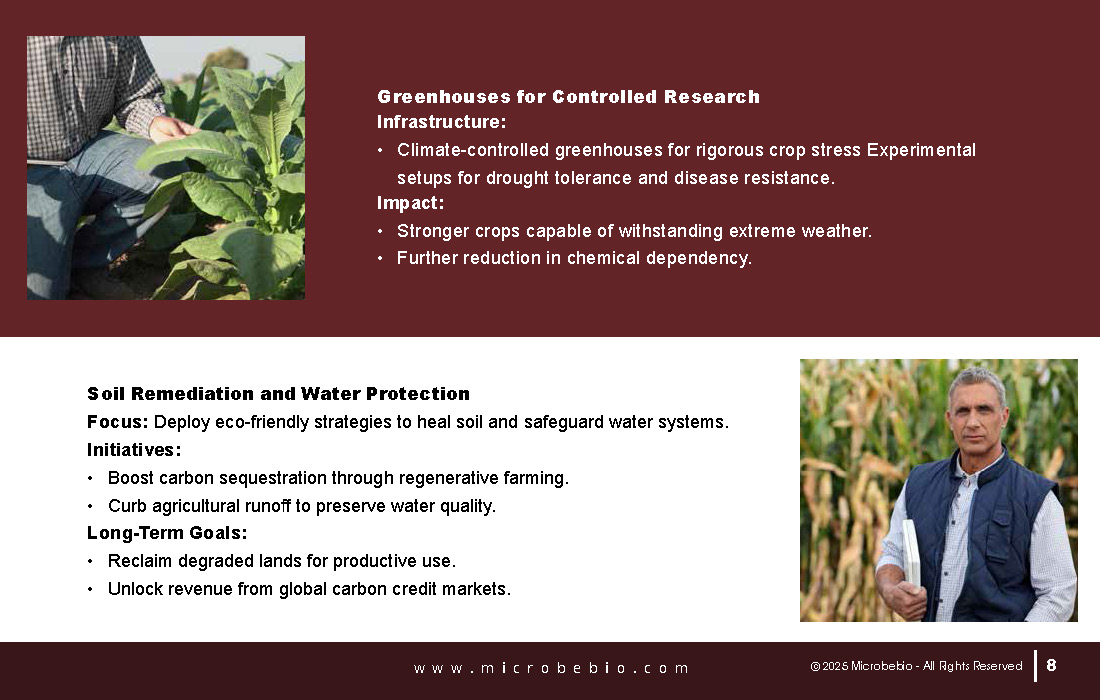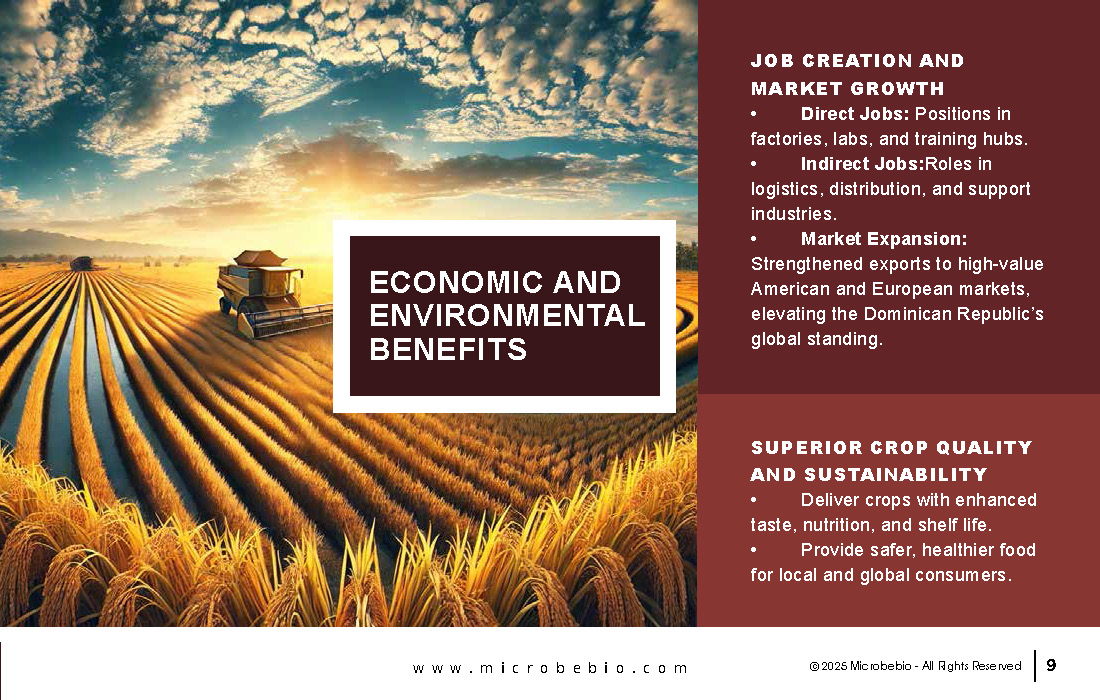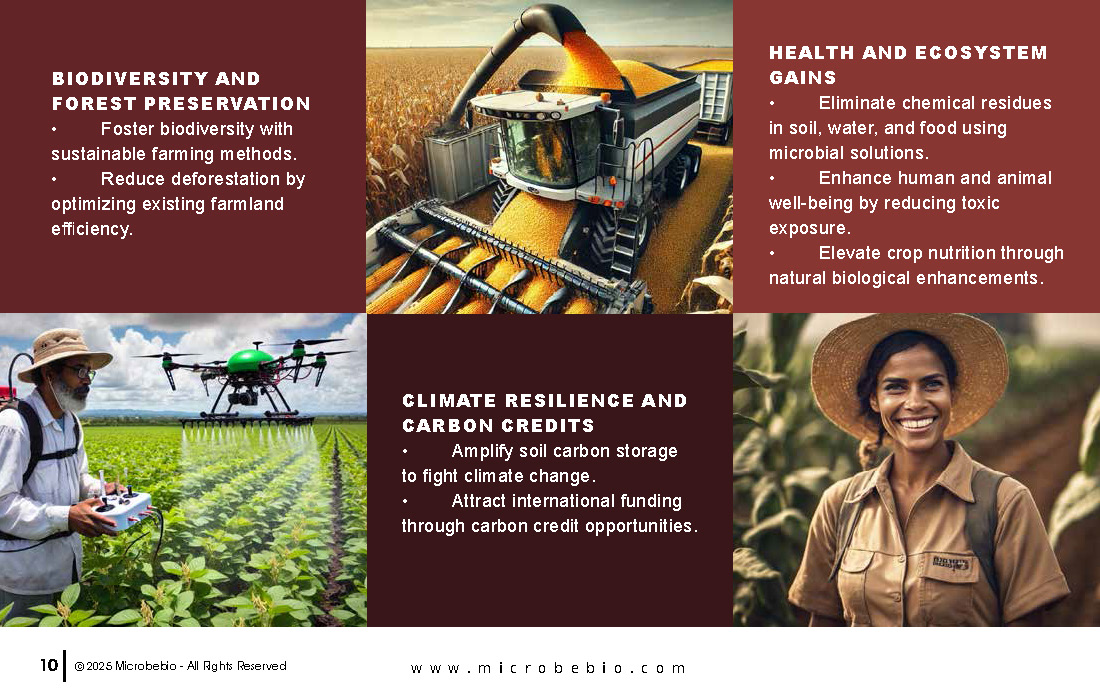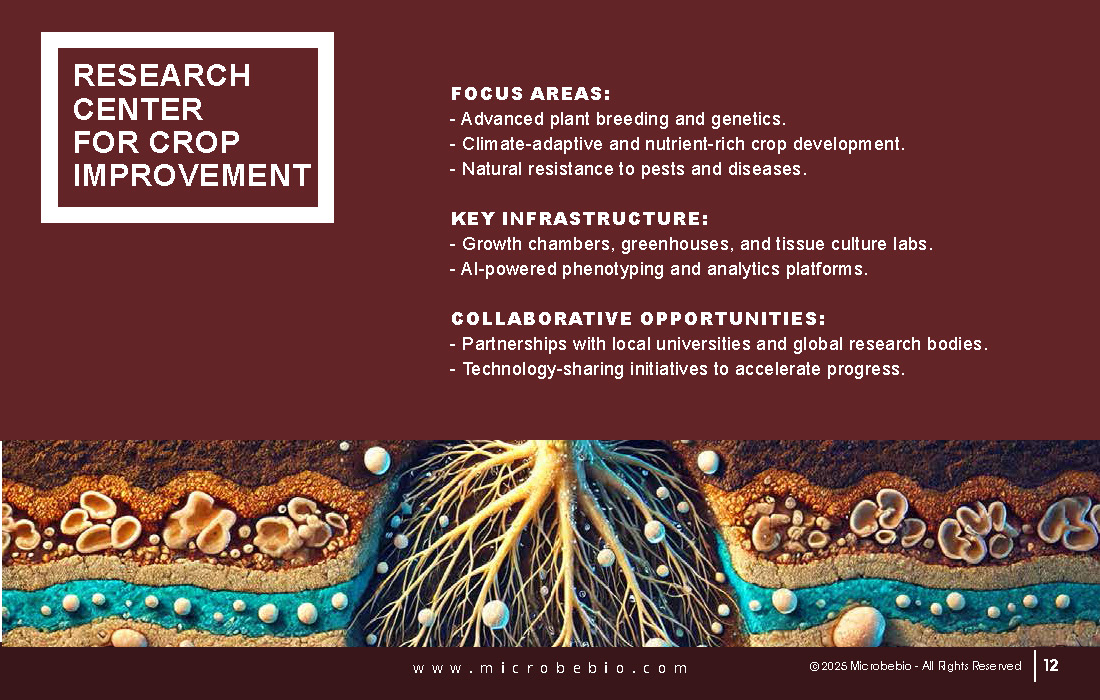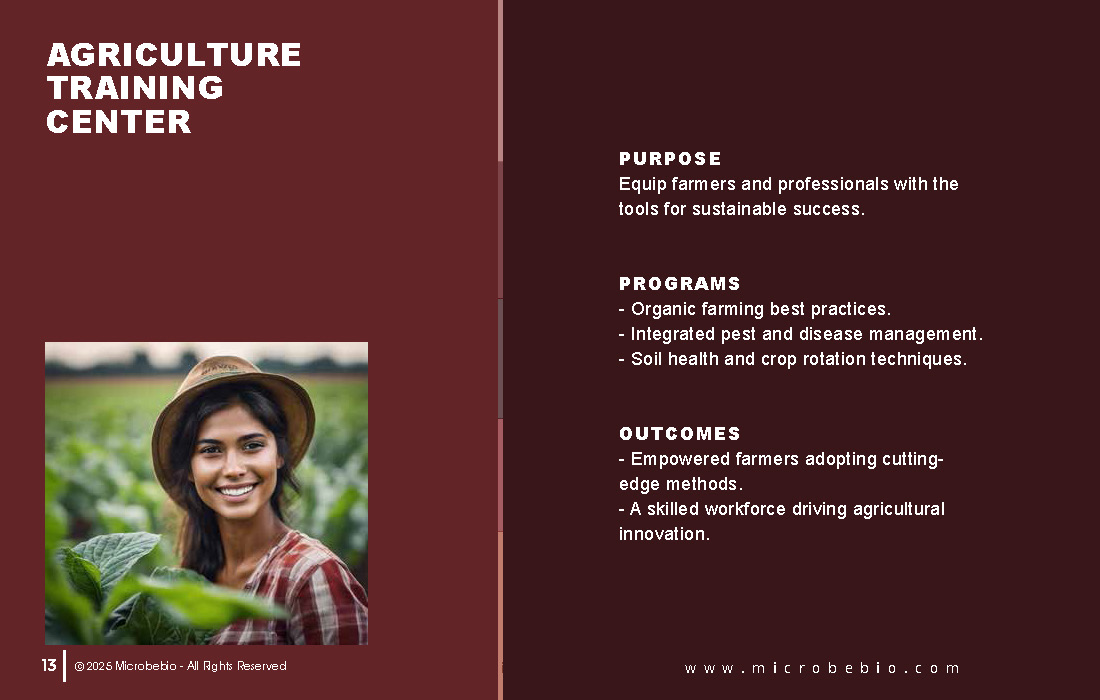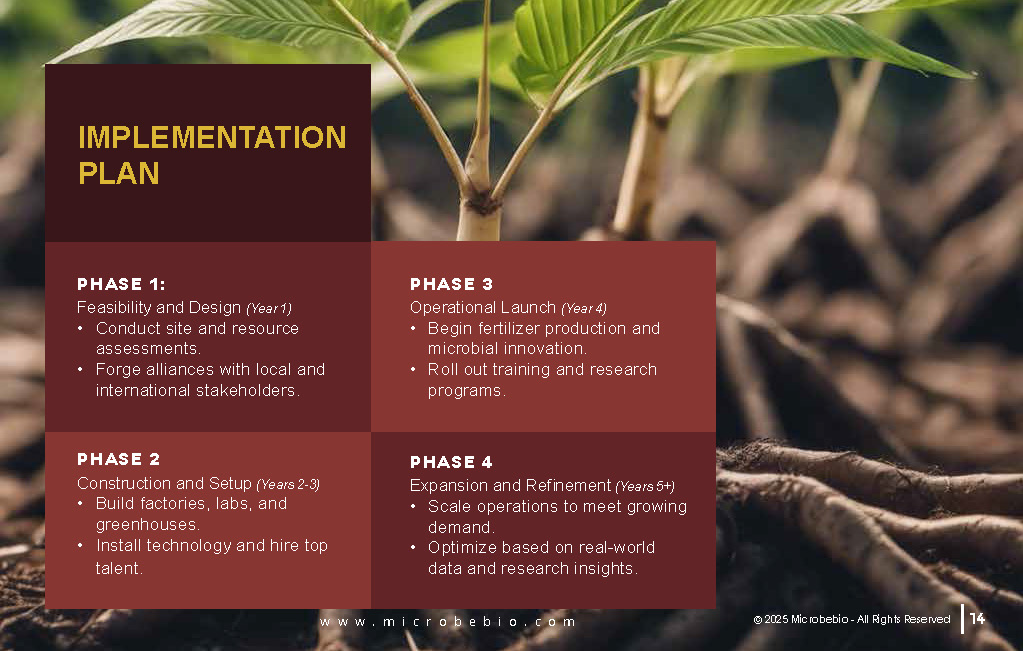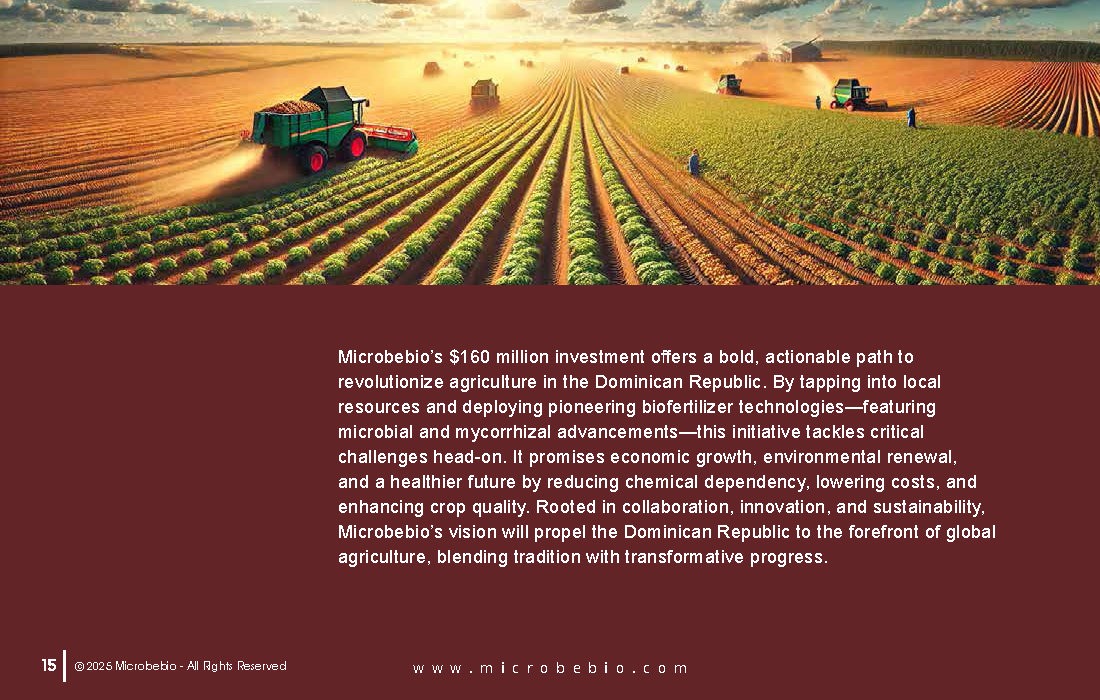Proposal: Microbebio’s Vision to Revolutionize Agriculture in the Dominican Republic
Microbebio proposes a $160 million investment to transform the Dominican Republic’s agricultural landscape through state-of-the-art organic fertilizer factories, cutting-edge research laboratories, and comprehensive agricultural training centers. This ambitious initiative aligns seamlessly with the nation’s rich agricultural heritage, addresses its pressing modern challenges, and paves the way for a sustainable, prosperous future. With $50 million dedicated to harnessing local resources and building inventory, $40 million reserved as a contingency fund, and the remainder fueling innovation and infrastructure, this plan positions the Dominican Republic as a global pioneer in sustainable farming. By deploying Microbebio’s world-class biofertilizer technologies—powered by advanced microbial and mycorrhizal solutions—this proposal promises to slash costs, reduce reliance on chemical inputs, enhance soil vitality, and improve human and animal health.
The Need and Historical Context of Agriculture in the Dominican Republic
Agriculture has long been the lifeblood of the Dominican Republic’s economy, with iconic crops like sugar, coffee, cacao, and bananas driving its export markets. Yet, this vital sector faces mounting threats: soil degradation, deforestation, water scarcity, and the heavy use of chemical fertilizers and pesticides have eroded productivity and environmental health. As the population grows and global demand surges for sustainable, high-quality produce, the need for innovative, eco-friendly solutions is urgent. Microbebio’s proposal tackles these challenges head-on by leveraging local resources and scientific breakthroughs to restore agricultural vitality and secure a greener future.
1. Organic Fertilizer Factories
Objective: Produce tailored, high-quality organic fertilizers to meet the Dominican Republic’s unique soil and crop demands.
Focus Areas:
– Utilize local raw materials to reduce import dependency.
– Enrich fertilizers with microbes, mycorrhizae, and essential trace minerals to revitalize soil.
Benefits:
– Lower CO2 emissions through sustainable practices.
– Boost long-term soil fertility and farm productivity.
– Cut costs for farmers by phasing out chemical fertilizers while minimizing environmental harm.
2. Research Laboratories and Fermentation Facilities
Purpose: Innovate solutions for soil restoration, crop optimization, and natural pest and disease control.
Capabilities:
– Pioneering microbial and mycorrhizal formulations.
– Scalable fermentation processes for biofertilizer production.
Key Technologies:
– CRISPR-Cas9 for precision gene editing.
– Genomic sequencing and bioinformatics for targeted agriculture.
– AI-driven predictive analytics to combat pests and diseases.
3. Blending Facility and Seed Development
Objective: Engineer custom fertilizer blends and resilient seed varieties to maximize yield and durability.
Facilities:
– A seed development greenhouse with advanced cell culture technology.
– Labs crafting pest-resistant, nutrient-rich seeds.
Outcome:
– Superior crop quality—better flavor, aroma, and nutrition.
– Enhanced resistance to climate variability.
– Reduced need for chemical pesticides, protecting ecosystems and health.
4. Greenhouses for Controlled Research
Infrastructure:
– Climate-controlled greenhouses for rigorous crop stress testing.
– Experimental setups for drought tolerance and disease resistance.
Impact:
– Stronger crops capable of withstanding extreme weather.
– Further reduction in chemical dependency.
5. Soil Remediation and Water Protection
Focus: Deploy eco-friendly strategies to heal soil and safeguard water systems.
Initiatives:
– Boost carbon sequestration through regenerative farming.
– Curb agricultural runoff to preserve water quality.
Long-Term Goals:
– Reclaim degraded lands for productive use.
– Unlock revenue from global carbon credit markets.
Economic and Environmental Benefits
1. Job Creation and Market Growth
– Direct Jobs: Positions in factories, labs, and training hubs.
– Indirect Jobs: Roles in logistics, distribution, and support industries.
– Market Expansion: Strengthened exports to high-value American and European markets, elevating the Dominican Republic’s global standing.
2. Biodiversity and Forest Preservation
– Foster biodiversity with sustainable farming methods.
– Reduce deforestation by optimizing existing farmland efficiency.
3. Climate Resilience and Carbon Credits
– Amplify soil carbon storage to fight climate change.
– Attract international funding through carbon credit opportunities.
4. Superior Crop Quality and Sustainability
– Deliver crops with enhanced taste, nutrition, and shelf life.
– Provide safer, healthier food for local and global consumers.
5. Health and Ecosystem Gains
– Eliminate chemical residues in soil, water, and food using microbial solutions.
– Enhance human and animal well-being by reducing toxic exposure.
– Elevate crop nutrition through natural biological enhancements.
Agriculture Training Center
Purpose: Equip farmers and professionals with the tools for sustainable success.
Programs:
– Organic farming best practices.
– Integrated pest and disease management.
– Soil health and crop rotation techniques.
Outcomes:
– Empowered farmers adopting cutting-edge methods.
– A skilled workforce driving agricultural innovation.
Research Center for Crop Improvement
Focus Areas:
– Advanced plant breeding and genetics.
– Climate-adaptive and nutrient-rich crop development.
– Natural resistance to pests and diseases.
Key Infrastructure:
– Growth chambers, greenhouses, and tissue culture labs.
– AI-powered phenotyping and analytics platforms.
Collaborative Opportunities:
– Partnerships with local universities and global research bodies.
– Technology-sharing initiatives to accelerate progress.
Implementation Plan
Phase 1: Feasibility and Design (Year 1)
– Conduct site and resource assessments.
– Forge alliances with local and international stakeholders.
Phase 2: Construction and Setup (Years 2-3)
– Build factories, labs, and greenhouses.
– Install technology and hire top talent.
Phase 3: Operational Launch (Year 4)
– Begin fertilizer production and microbial innovation.
– Roll out training and research programs.
Phase 4: Expansion and Refinement (Years 5+)
– Scale operations to meet growing demand.
– Optimize based on real-world data and research insights.
Microbebio’s $160 million investment offers a bold, actionable path to revolutionize agriculture in the Dominican Republic. By tapping into local resources and deploying pioneering biofertilizer technologies—featuring microbial and mycorrhizal advancements—this initiative tackles critical challenges head-on. It promises economic growth, environmental renewal, and a healthier future by reducing chemical dependency, lowering costs, and enhancing crop quality. Rooted in collaboration, innovation, and sustainability, Microbebio’s vision will propel the Dominican Republic to the forefront of global agriculture, blending tradition with transformative progress.
